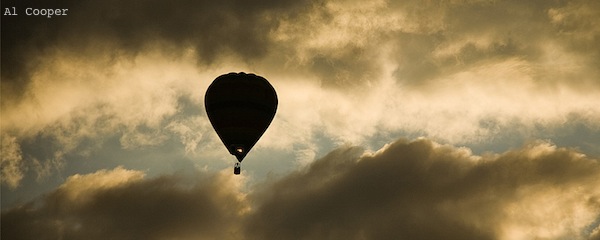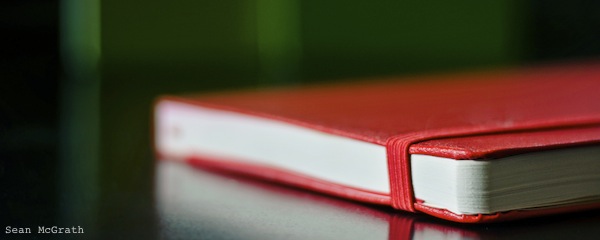
photo by Sean McGrath
Do you need to keep a notebook?
The short story writer and the inception of ideas
by Sally O’Reilly
How does an idea become a short story? It’s hard to define or describe the process. The relationship between creativity and physicality is one that we sometimes overlook. Writers are cerebral people, generally speaking, and it can be tempting to live in our heads much of the time. But the physical process of writing is essential to the development of fiction. The brain/hand connection is as important to a writer as it is to a tennis player.
What exists in our imagination is usually formless and confused until it has become, in some way, physically real – at which point we may find that other ideas attach to it. Some writers carry ideas round in their heads for months – but I can’t be the only person who thought they were doing this, only to discover that the idea had disappeared.
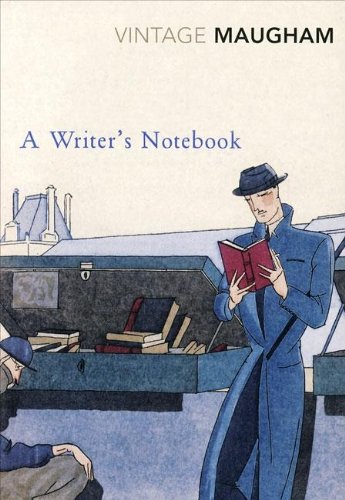 Obviously there are different ways of keeping track of our thoughts. A note on an iPhone may be all that’s needed to record the passing moment, or to pin down a sudden inspiration. But perhaps we are losing something if we turn our thoughts into instant electronic data. The notebook, tried and tested for centuries, is an invaluable tool. Not only is it a repository of ideas and experience, it can also help generate lateral connections.
Obviously there are different ways of keeping track of our thoughts. A note on an iPhone may be all that’s needed to record the passing moment, or to pin down a sudden inspiration. But perhaps we are losing something if we turn our thoughts into instant electronic data. The notebook, tried and tested for centuries, is an invaluable tool. Not only is it a repository of ideas and experience, it can also help generate lateral connections.
Does this relate particularly to short fiction? I would argue that it does because short stories are immediate, intense and distilled, creating their effect in 10,000 words or less (usually much less). In his essay ‘The Philosophy of Composition’, from Graham’s Magazine in 1846, Edgar Allan Poe suggests that the definitive characteristic of a short story is that it can be read in one sitting. Attention spans may have contracted since the mid-nineteenth century, but his famous definition still holds true, perhaps because it is so simple. And while there are innumerable cues for a short story, many are based on one observation, one thought, one moment in time.
Or possibly one sentence in a notebook.
Essentially, a notebook helps us to focus on our immediate responses to the world. Writing in the preface to A Writer’s Notebook, novelist and short story writer W. Somerset Maugham says:
When you know you are going to make a note of something, you look at it more attentively than you otherwise would, and in the process of doing so the words are borne in upon you that will give it its private place in reality.
Habit is also important according to Virginia Woolf. In A Writer’s Diary, she says:
But what is more to the point is my belief that the habit of writing thus for my own eye only is good practice. It loosens the ligaments. Never mind the misses and the stumbles. Going at such a pace as I do I must make the most direct and instant shots at my object, and thus have to lay hands on words, choose them and shoot them with no more pause than is needed to put my pen in the ink.
For most writers, a notebook is the closest thing we have to an artist’s sketch book, and the equivalent of a studio. Instead of an atelier of half-finished canvases, splashed with paint, we have jottings and scrawled sentences which catch at our vision of life, and can sometimes contain passing flashes of inspiration that would otherwise have gone forever. Unlike sketchbooks, they are rarely beautiful in themselves, although there may be beautiful things in them.
Does the quality of such notebooks matter? At worst, an expensive notebook can tempt us to write self-consciously, or pretentiously. I used to think the travel writer Bruce Chatwin was guilty of notebook narcissism. In his memoir The Songlines, he writes:
I made three neat stacks of my “Paris” notebooks. In France, these notebooks are known as carnets moleskines: ‘moleskine’, in this case, being its black oilcloth binding. Each time I went to Paris, I would buy a fresh supply from a papeterie in the Rue de l’Ancienne-Comédie.
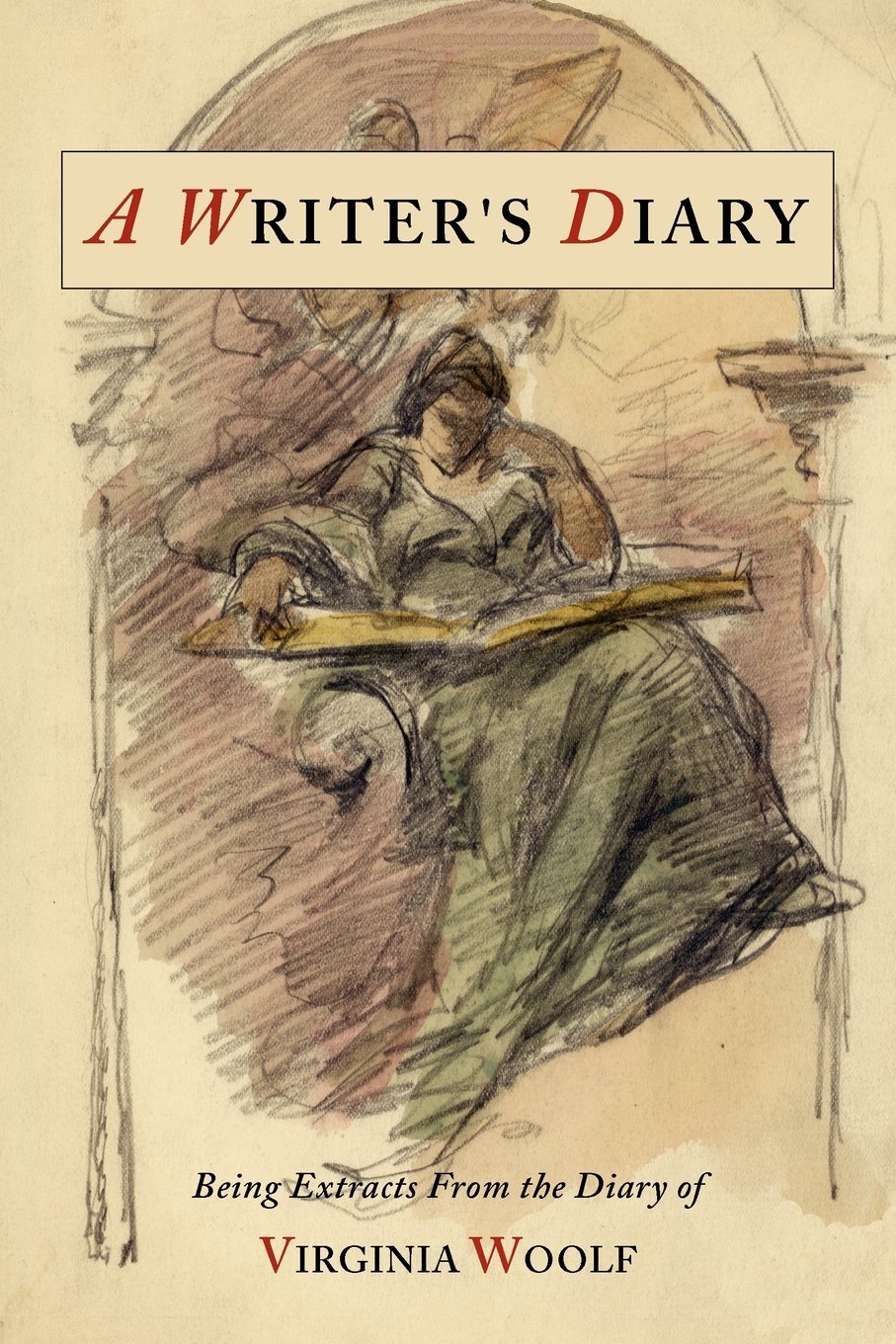 These notebooks went out of production in 1986, but a Milanese publisher brought them back into production in 1997 using Chatwin’s term ‘Moleskine’ to give credibility to the brand. They are now ‘design classics’, which potentially adds to their dubiousness as the tools of a writer’s trade. But – confession time – I now write in a Moleskine notebook myself.
These notebooks went out of production in 1986, but a Milanese publisher brought them back into production in 1997 using Chatwin’s term ‘Moleskine’ to give credibility to the brand. They are now ‘design classics’, which potentially adds to their dubiousness as the tools of a writer’s trade. But – confession time – I now write in a Moleskine notebook myself.
The writer Ailsa Cox stresses that the notebook should help us connect with the energy of lived experience. Writers like Katherine Mansfield fuelled their intensely observed short fiction by making bright, immediate word sketches, using sensory observation to record the minutiae of the ‘ordinary’ world. In Writing Short Stories: A Routledge Writer’s Guide, Cox explains: ‘Notebook-writing doesn’t have to prove anything or be shown to anyone. Mine’s indecipherable anyway.’
Although habit is important, writing in your notebook shouldn’t be an oppressive duty. The spontaneity essential to the best short story writing is best fostered if you write in your notebook regularly, but not slavishly, Cox believes.
The idea is to liberate your creativity, not restrict your own freedom. Write whenever you find an opportunity. I have to confess I have sometimes started scribbling during an especially mind-numbing meeting.
Perhaps the most important function of a notebook is that it is portable, and you can almost write in it off-guard, without worrying about the quality or quantity of what you produce. Tapping the overwhelming chaos and frenzy of the human mind isn’t easy, and writing in quick snatches can help set this strange process in motion. In one way, writing is thinking made physical: it’s a bodily encapsulation of perception. The short story can exemplify this. Each new story is a fresh experiment.
In some ways, I am more intimidated by the idea of writing short fiction now than I was when I started writing seriously, twenty years ago. It’s all a work in progress. So the notebook is my ally in the struggle to improve as a writer, and to feed my imagination with fresh ideas. I write on trains, in cafés, parks, at the seaside, in the kitchen, anywhere. Short stories don’t always emerge from these scribbles, but there is always something there when I close the book that didn’t exist when I opened it.
~
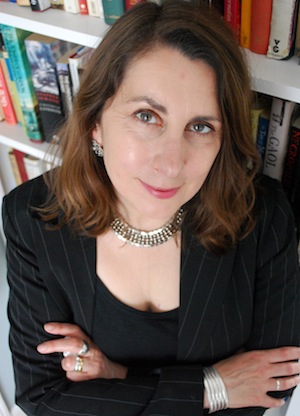 Sally O’Reilly’s first historical novel Dark Aemilia is published by Myriad Editions in March 2014 and Picador US in May 2014. The novel is a fictional account of the relationship between Aemilia Lanyer, one of the first women to be published professionally as a poet in England, and William Shakespeare. Her current project, commissioned by Myriad Editions, is a novel about Aphra Behn.
Sally O’Reilly’s first historical novel Dark Aemilia is published by Myriad Editions in March 2014 and Picador US in May 2014. The novel is a fictional account of the relationship between Aemilia Lanyer, one of the first women to be published professionally as a poet in England, and William Shakespeare. Her current project, commissioned by Myriad Editions, is a novel about Aphra Behn.
She is also the author of two contemporary novels (Penguin) and a career guide for writers (Piatkus), and her short stories have been published in the UK, Australia and South Africa.
She works as a lecturer in Creative Writing at the Open University, and was awarded a PhD in English and Creative Writing by Brunel University in 2013. Previously, she lectured at the University of Portsmouth and worked as a journalist, freelancing for the Guardian, Sunday Times and New Scientist. She is a former Cosmopolitan New Journalist of the Year, and was shortlisted for the Cosmopolitan short story prize and the Ian St James Award.

